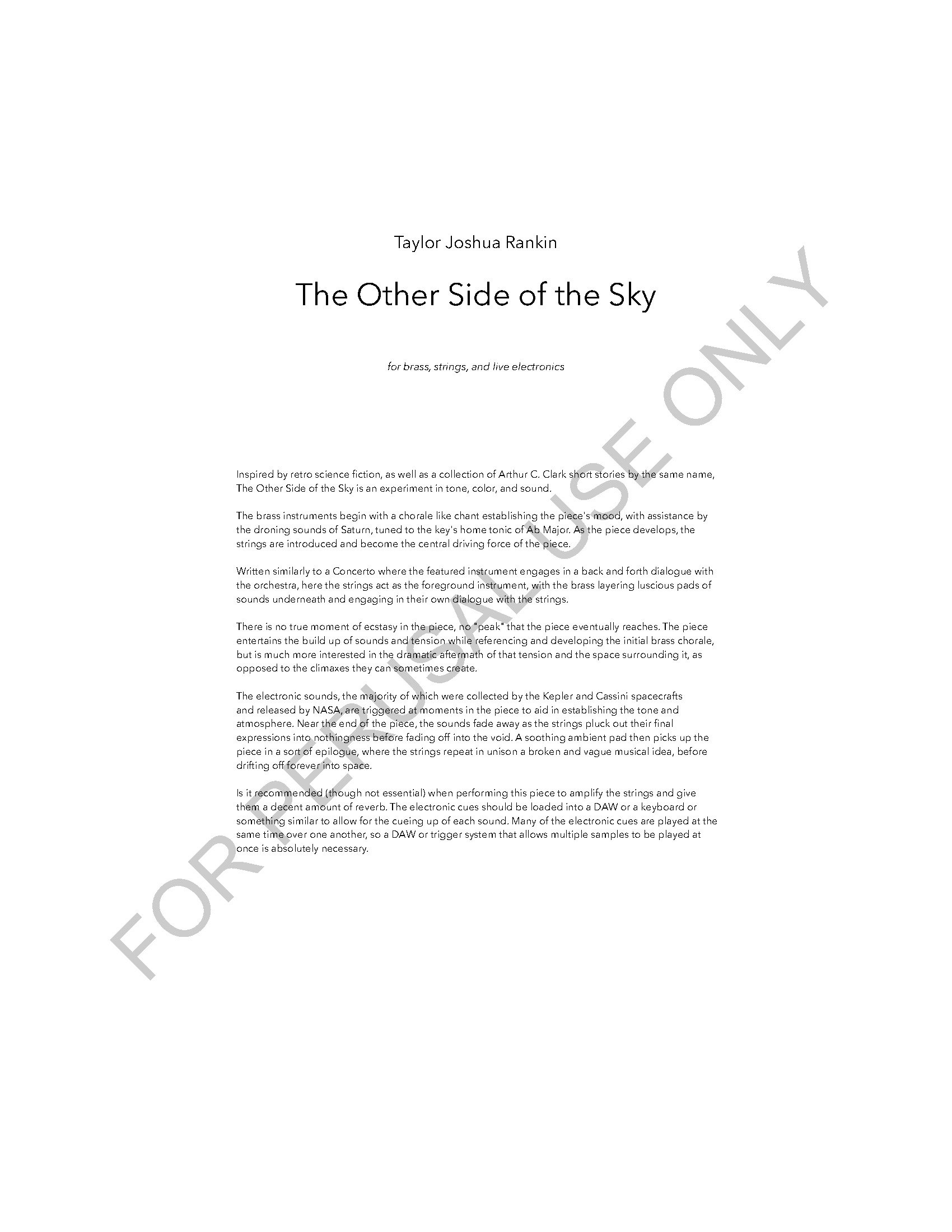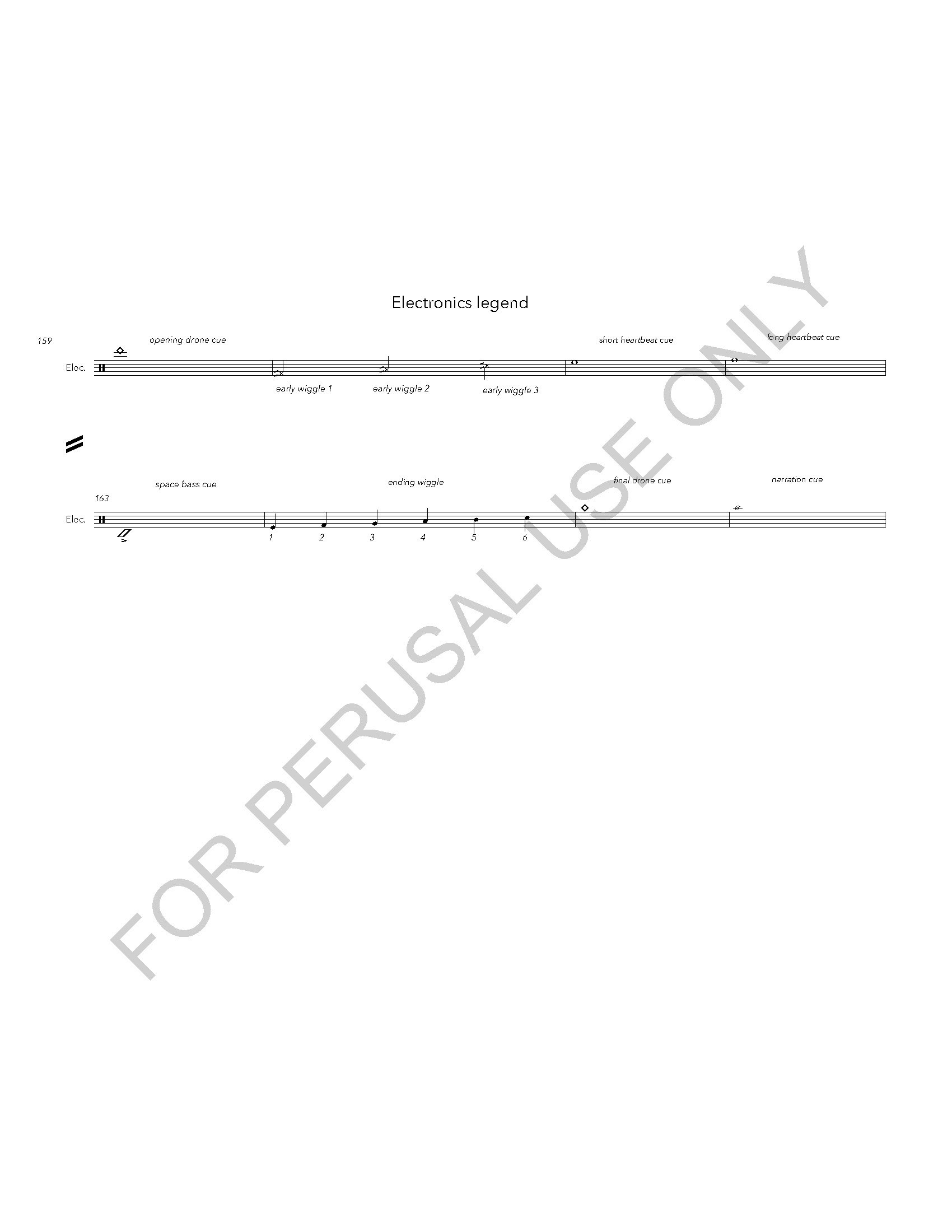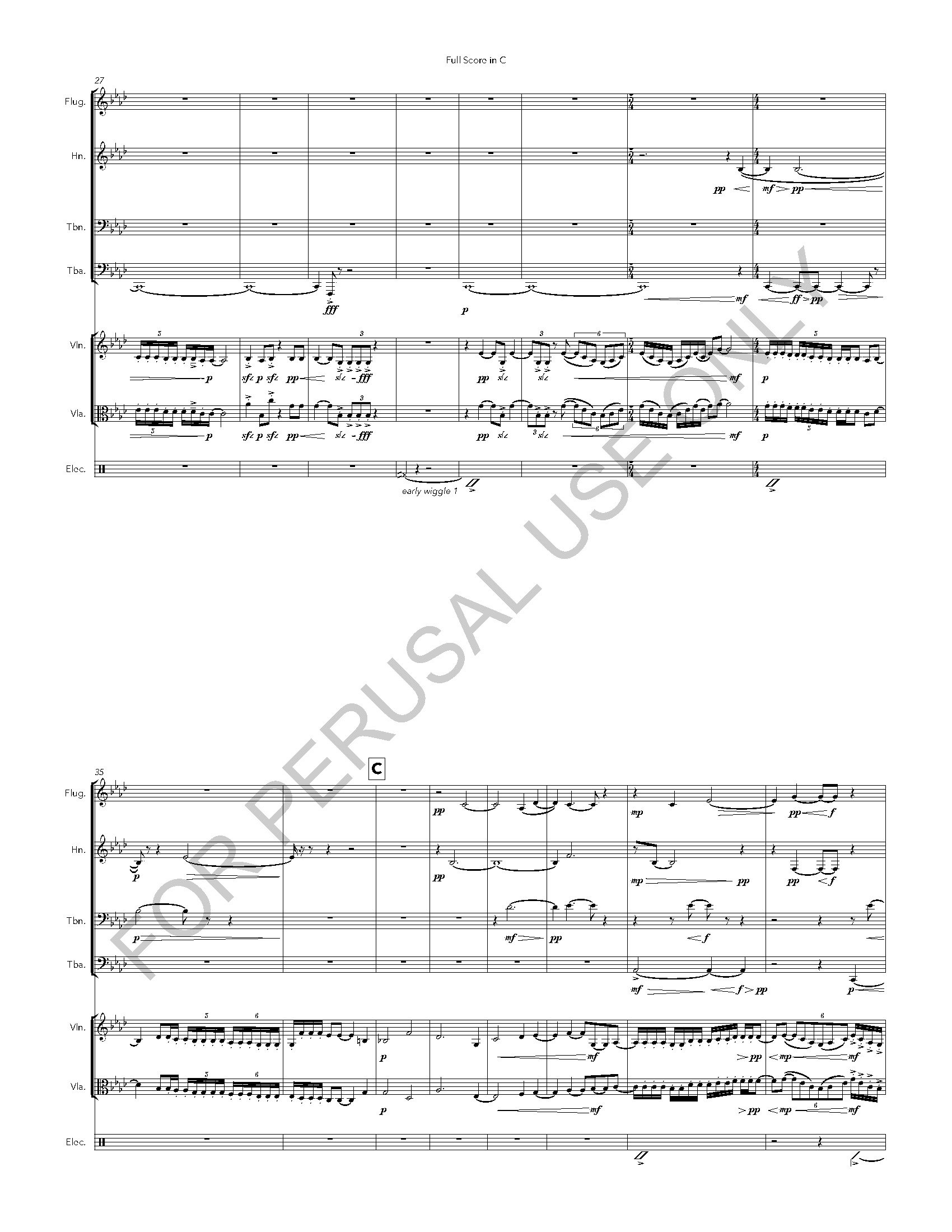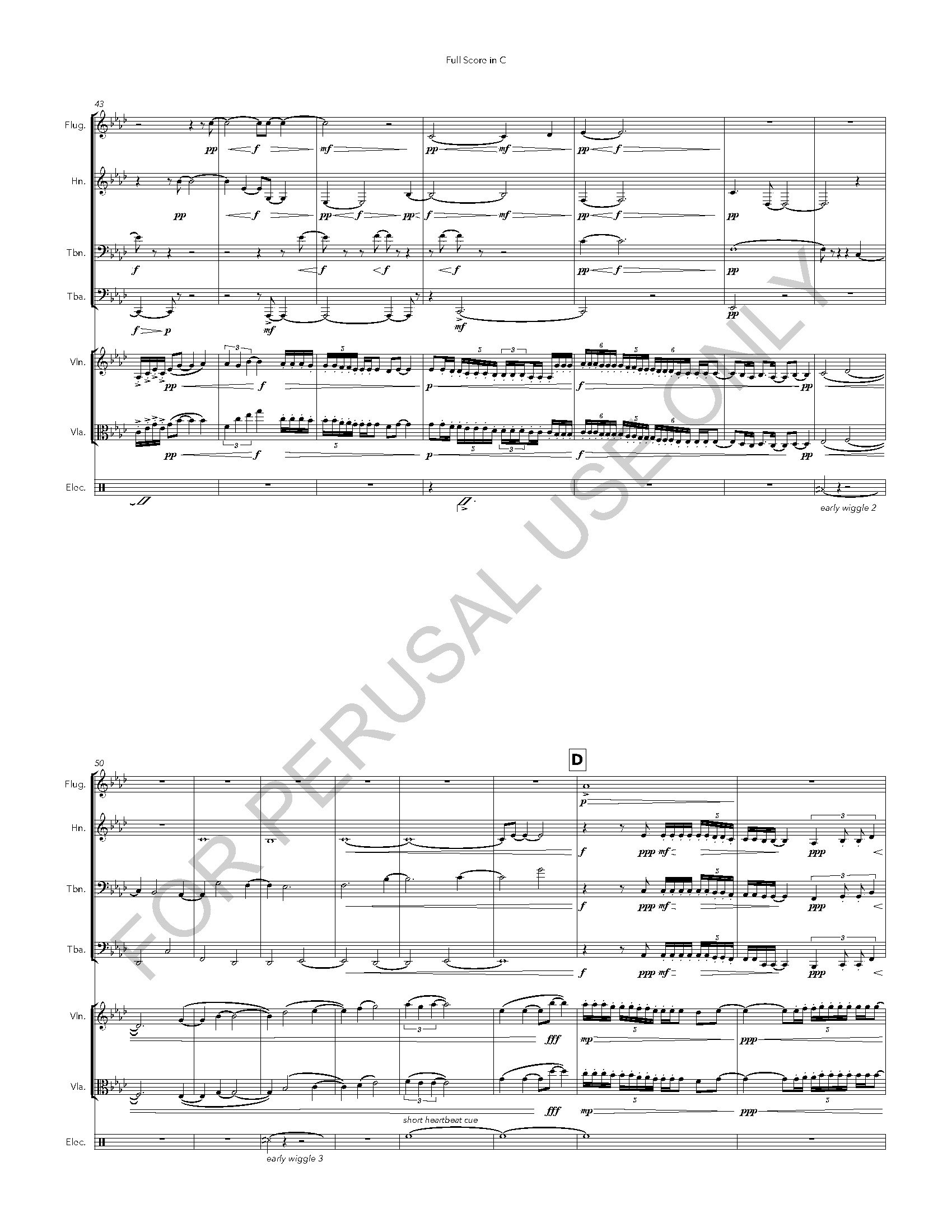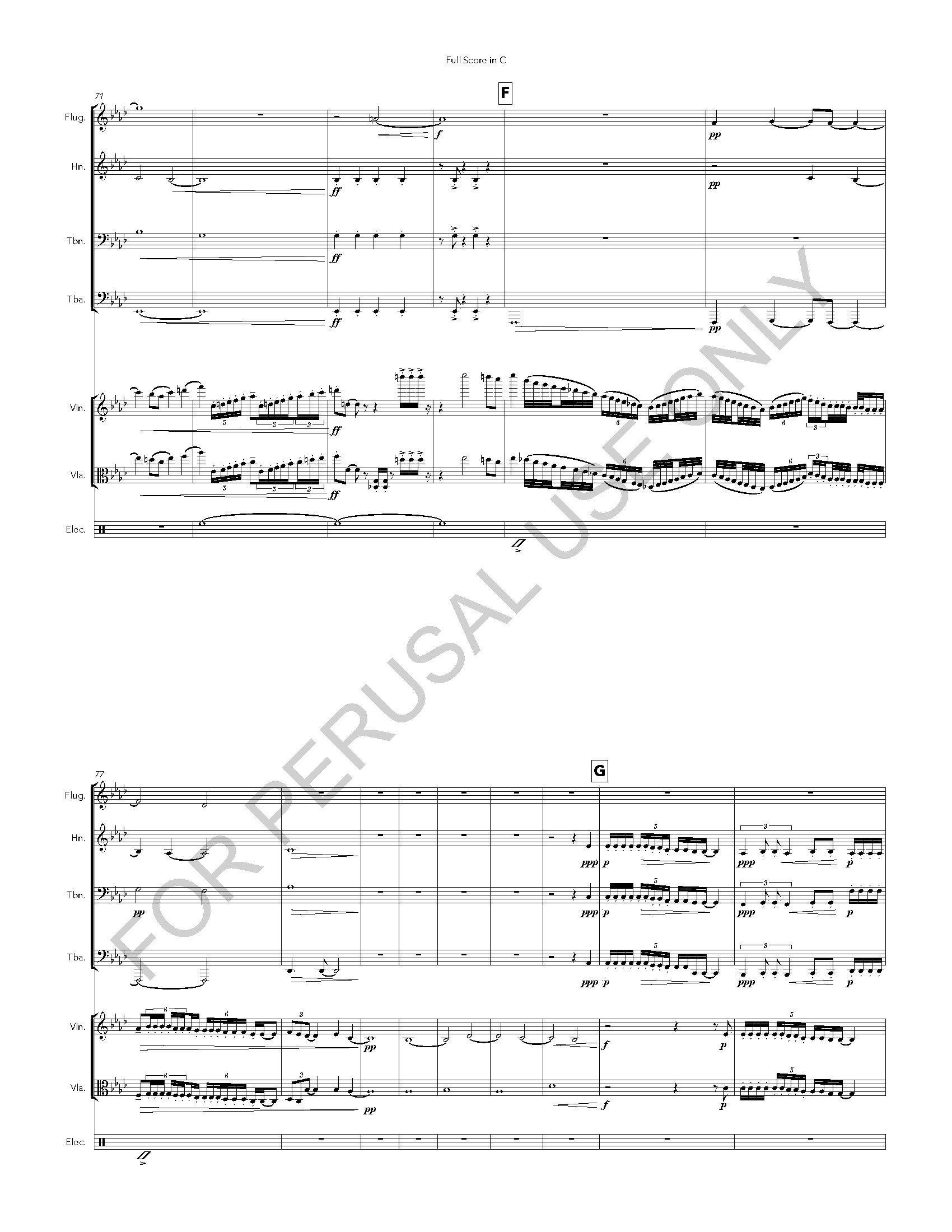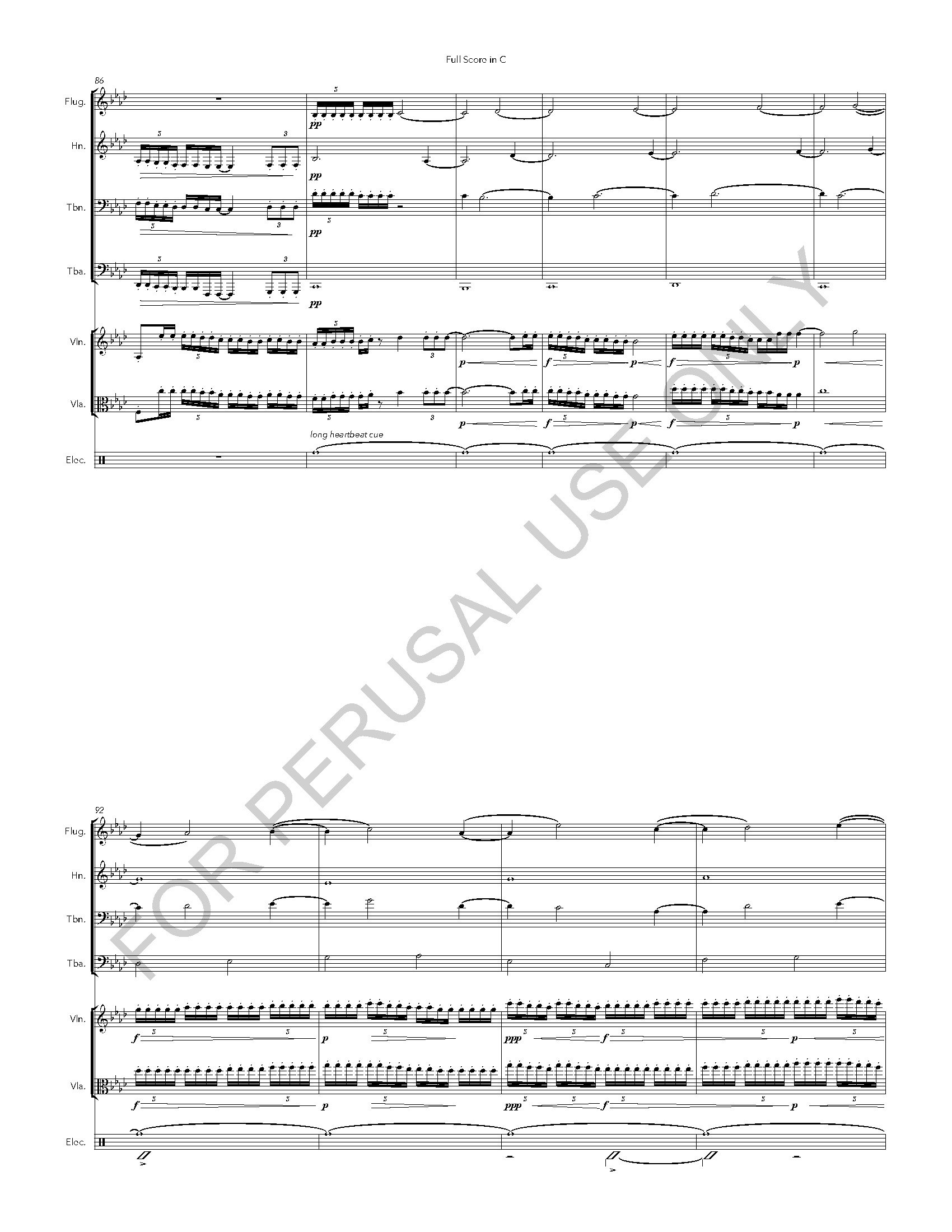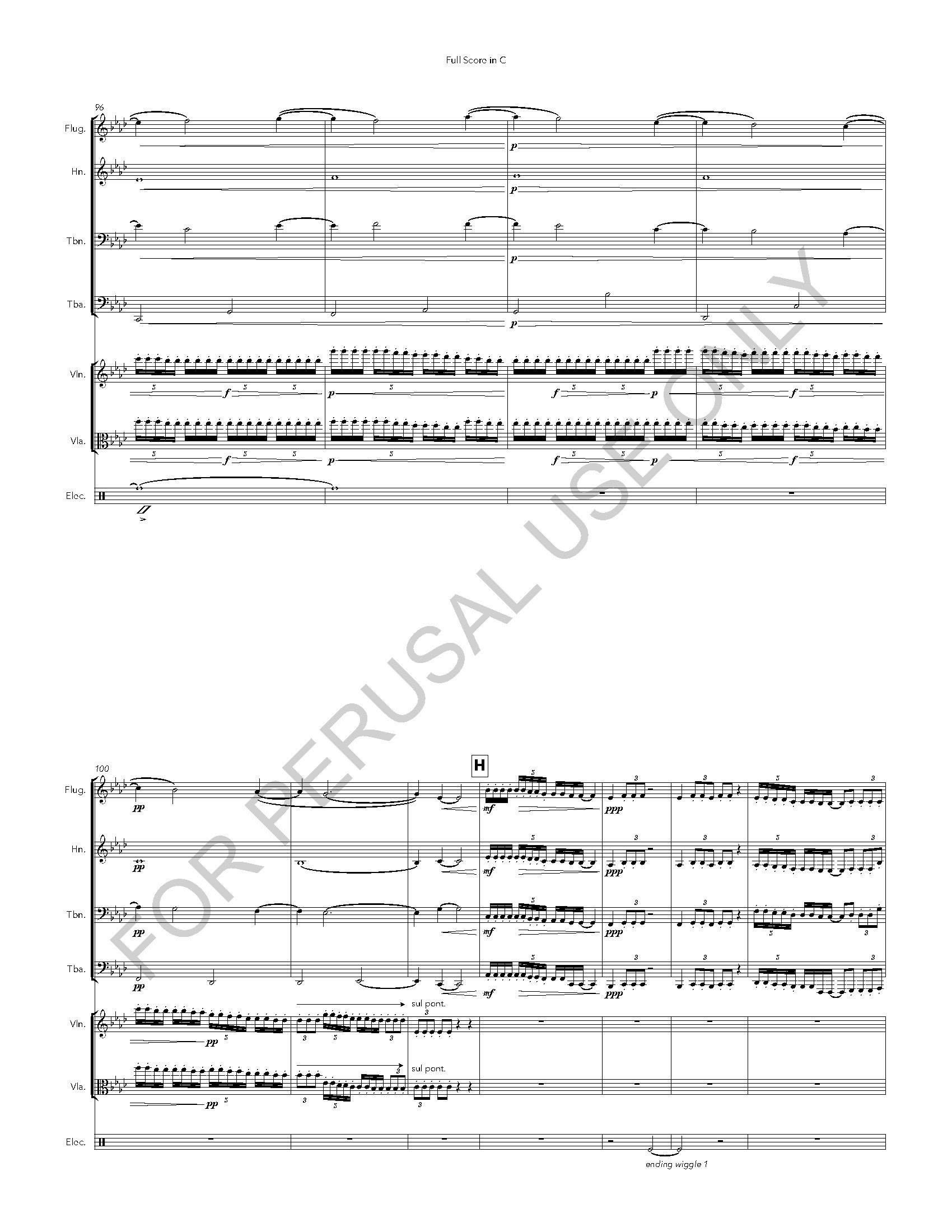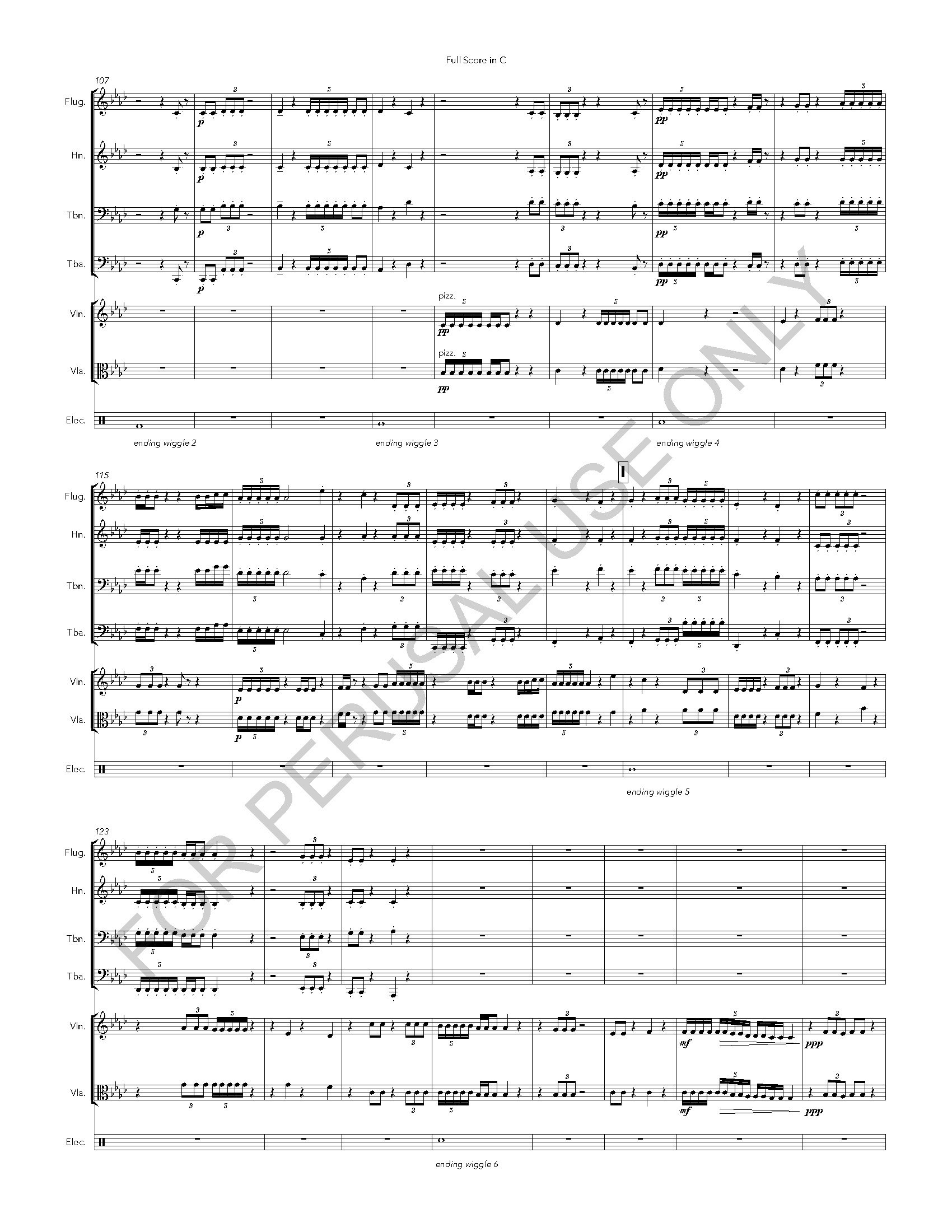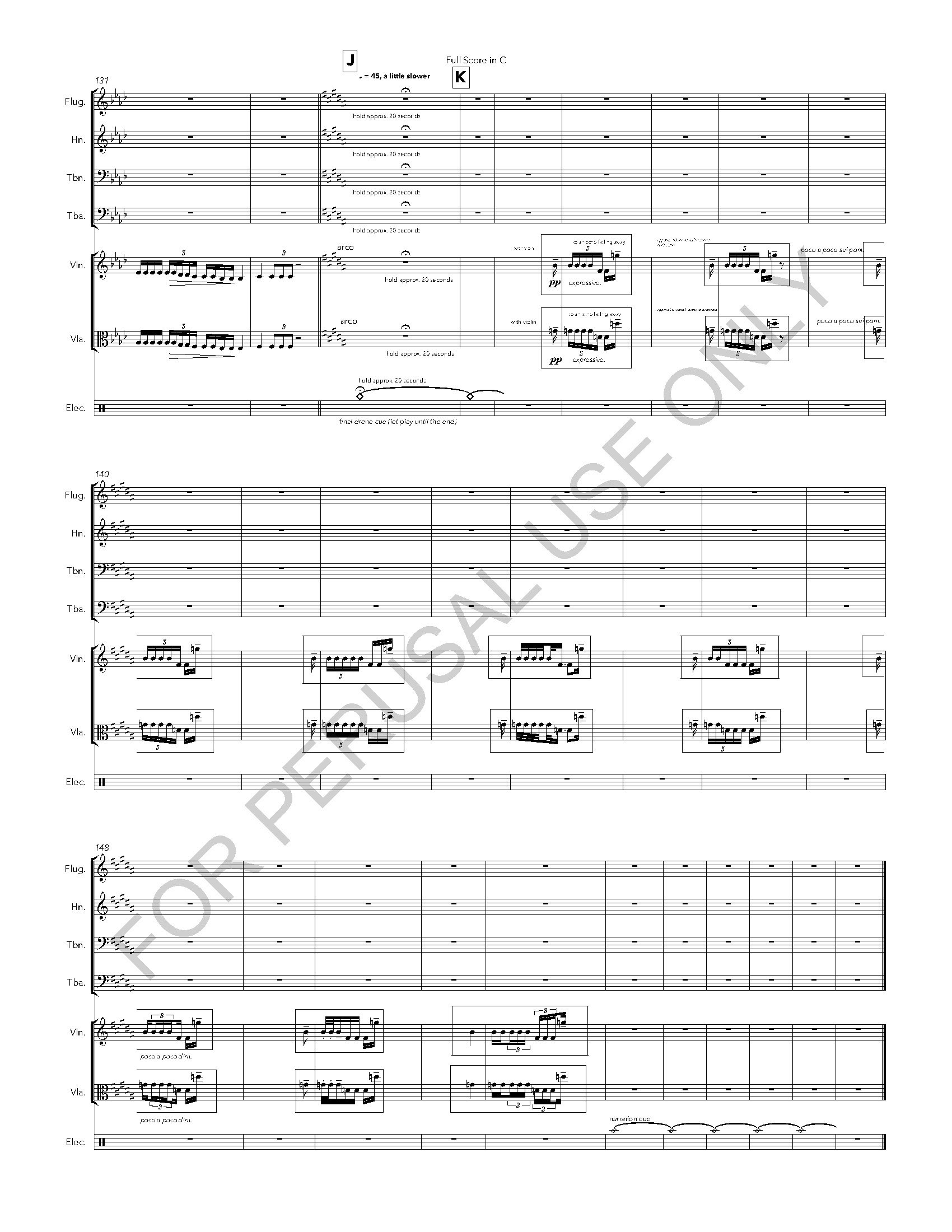The Other Side of the Sky (2017)
brass quartet, violin, viola, electronics
14 minutes
Note
flugelhorn, french horn, trombone, tuba, violin, viola, electronics
Inspired by retro science fiction, as well as a collection of Arthur C. Clark short stories by the same name, The Other Side of the Sky is an experiment in tone, color, and sound. The brass instruments begin with a chorale like chant establishing the piece's mood, with assistance by the droning sounds of Saturn, tuned to the key's home tonic of Ab Major. As the piece develops, the strings are introduced and become the central driving force of the piece. Written similarly to a Concerto where the featured instrument engages in a back and forth dialogue with the accompaniment, here the strings act as the foreground instrument, with the brass layering luscious pads of sounds underneath and engaging in their own dialogue with the strings.
There is no true moment of ecstasy in the piece, no "peak" that the piece eventually reaches. The piece entertains the build up of sounds and tension while referencing and developing the initial brass chorale, but is much more interested in the dramatic aftermath of that tension and the space surrounding it, as opposed to the climaxes they can sometimes create.
The electronic sounds, the majority of which were collected by the Kepler and Cassini spacecrafts and released by NASA, are triggered at moments in the piece to aid in establishing the tone and atmosphere. Near the end of the piece, the sounds fade away as the strings pluck out their final expressions into nothingness before fading off into the void. A soothing ambient pad then picks up the piece in a sort of epilogue, where the strings repeat in unison a broken and vague musical idea before drifting off forever into space.
Is it recommended (though not essential) when performing this piece to amplify the strings and give them a decent amount of reverb. The electronic cues should be loaded into a DAW or a keyboard or something similar to allow for the cueing up of each sound. Many of the electronic cues are played at the same time over one another, so a DAW or trigger system that allows multiple samples to be played at once is absolutely necessary.
Digital download of all performance materials including score, parts, and electronic sound cues.
Score
